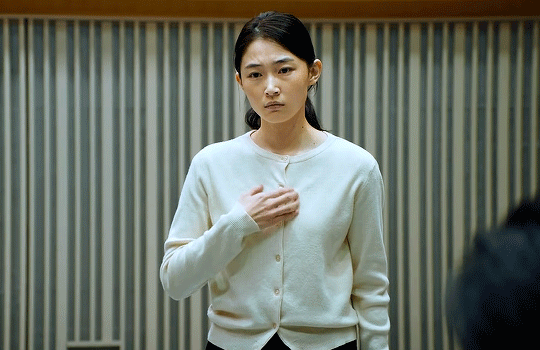
Hollywood has begun writing a new script focused on inclusion, and among those leading the push for stronger representation and accessibility are members of the deaf and hard-of-hearing community.
Advocacy efforts by stars like Oscar-winning actress Marlee Matlin and Marvel’s Lauren Ridloff — as well as movies like CODA, The Sound of Metal and A Quiet Place and television programs like Hawkeye and Only Murders in the Building featuring deaf themes and actors who are deaf — have helped spotlight the importance of representation and on-screen and off-screen access for all. These movies and programs have earned rave reviews for their stories, characters, and portrayals, demonstrating a deep need for these stories within the cultural zeitgeist.

Additionally, the increasing use and popularity of captions and subtitles on foreign-language favorites like Netflix’s Squid Game and Babylon Berlin has helped move more viewers past that barrier of watching a show with captions or subtitles.
With the Oscars and Emmys just around the bend, it’s the perfect time to discuss the need to normalize captioning and highlight ways that it can benefit all audiences not only those in the deaf and hard-of-hearing community.
Captions Are Essential
Captions are essential for members of the deaf and hard-of-hearing community, allowing individuals to follow dialogue and audio and providing equal access to programs, performances, and events. Their purpose (and the purpose of audio description, subtitles, and other communication accessibility services) is make content accessible to everyone, regardless of ability.
The Federal Communications Commission requires captioning on traditional television broadcasts, and many streaming content producers and platforms like Netflix, Hulu, HBO Max, and others have taken it upon themselves to caption their shows to reach the largest possible audience.
Captions on the Rise
Effective captioning goes beyond helping broadcasters, streaming platforms, media producers, and production companies comply with Federal Communication Commission guidelines — it also keeps viewers of varying abilities engaged and entertained.
According to a survey by Verizon Media and Publicis Media, 80% of people who use captions are not deaf or hard of hearing, with half of the study’s respondents saying that captions were important since they often watch videos with no audio, either on a desktop, tablet, or mobile device.
80% of people who use captions are not deaf or hard of hearing, with half of the study’s respondents saying that captions were important since they often watch videos with no audio.
And the media and entertainment industry has taken notice.
Theaters around the country — those featuring live performances and movies — also are offering more open captioning options for audiences. For example, AMC Entertainment, the largest movie theater chain in the world, pledged to offer open captioning at more than 200 locations in the United States.
And this year’s broadcast of the Screen Actors Guild Awards, for the first time in its 28-year history, featured both live closed captioning and live audio description, and marked the first time that a blind professional voiceover artist provided live audio description narration during a telecast.
This year’s 94th Academy Awards also will feature closed captioning and audio description for the live nationwide telecast, and the Academy of Motion Picture Arts and Sciences recently unveiled an initiative to promote diversity and inclusion in motion pictures, with a goal to expand opportunities for, among others, people with disabilities both on screen and behind the scenes.
Global Audiences
From an M&E perspective, captions can boost viewing figures for television programs, movies, and videos. If the 1 in 5 people who are deaf or hard-of-hearing can’t access or understand the content, that’s a whole lot of people who are less likely to enjoy it and much less likely to watch.
Captions and subtitles also make more content accessible for audiences around the world.
With the rise of streaming services, small-screen content has acquired an international breadth so that each year creators from around the world have access to a global platform that enables more viewers to watch shows that previously wouldn’t have crossed borders, let alone language barriers.
Netflix’s own user surveys show that more than 80% of its members use subtitles or closed captions at least once a month, and that U.S. viewing of non-English titles has increased by 33%.
Netflix’s own surveys show that more than 80% of its members use subtitles or closed captions at least once a month, and that U.S. viewing of non-English titles has increased by 33%.
Some of the reasons that viewers click on subtitles and captions include:
- Watching a program in a language that is not native to them
- Helping clarify dialogue from characters with thick accents or dialects
- Enabling them to more easily follow along with the dialogue, especially if it contains accented speech, jargon, technical terms, or fast-talking
Industry Growth
Once regarded as a video-only service, captions have branched out into other entertainment areas, including gaming, podcasting, and live performances.
Gaming
Studios and game developers have begun to make games more accessible from launch, and are programming games with accessibility in mind from the onset.
Though video games largely are a visual medium, the audio — a good soundtrack and well-scripted and performed dialogue — are an important part of the gameplay, too.
Subtitles are common in most games and, in many cases, the font can be adjusted for size and color so that players can easily read the screen text.
Some developers also have begun incorporating haptic feedback into their designs as a way to replicate audio aspects of the game for deaf and hard-of-hearing players. This means that the player’s controller will vibrate or buzz when there is a noise onscreen, like an explosion on the battlefield or car engine revving.
Podcasting
It’s estimated that more than 120 million Americans listen to podcasts. However not all podcast fans will be listening to episodes.
Podcasts and podcasting platforms have come under fire in recent years as their accessibility has come into question. Without captions and/or transcripts, podcasts are completely inaccessible for those who are deaf or hard-of-hearing. Adding captions and downloadable transcripts not only opens the podcasting industry up to even more listeners but also sends a positive message on inclusion.
Live concerts and performances
A recent study by Stagetext found that as many as 31% of all people would be more likely to attend live events if more events had captions on a screen in the venue. That includes concerts, shows, talks, and theater performances.
The number of people who said they would be more likely to attend live events if they came with captions was even higher for younger ages, with nearly half of respondents aged 18-25 said they would.
Other Benefits
Outside of growing audiences and making content more inclusive, captions have been shown to boost viewer attention, engagement, and comprehension. They can help to improve grammar and, for early readers, seeing captions displayed on their favorite TV shows can help children work on their decoding skills — in short, what turns their knowledge of ABCs into correctly pronouncing and identifying words. They also help individuals understand different languages and are good learning tools for those whose first language is not English.
From a business perspective, adding captions to videos can increase search engine optimization scores, and make it easier for search engines to rank videos.
From a business perspective, adding captions to videos can increase search engine optimization scores, and make it easier for search engines to rank videos.
In the end, it’s no great surprise that captions, subtitles, and accessibility are on the rise in Hollywood. And it’s not hard to see how everyone – and not just those with hearing loss – benefits from captions and other inclusionary practices. The new script for inclusion gets two thumbs up.


Discussion
Responses (2)